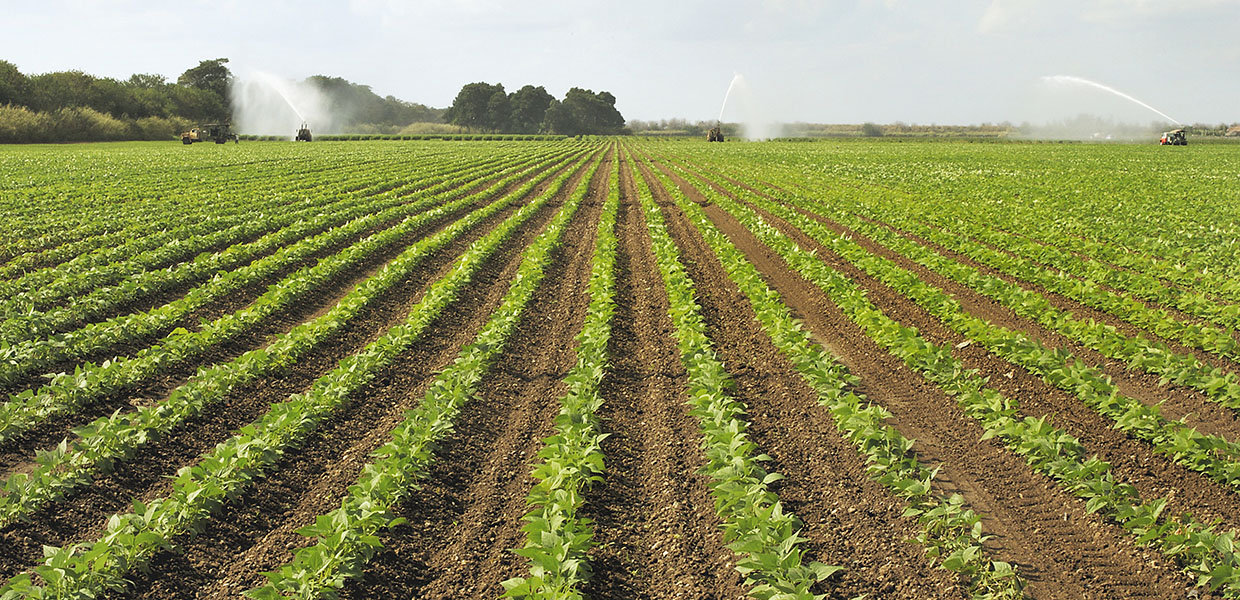Urban Agriculture: Growing Food in City Atmospheres
Urban Agriculture: Growing Food in City Atmospheres
Blog Article
Enhance Agricultural Efficiency With High-Quality Water Soluble Polymers
These polymers use a variety of advantages that can reinvent traditional farming techniques, from boosting water retention and performance to enhancing dirt structure and nutrient delivery systems. By utilizing the power of innovative polymer options, farmers can potentially open brand-new pathways towards achieving higher plant yields while reducing ecological effects.

Benefits of Water-Soluble Polymers
Water-soluble polymers supply a wide range of benefits in agricultural applications due to their enhanced water retention buildings and capacity to enhance soil framework. Agriculture. These polymers, when added to the dirt, can substantially boost water holding capability, minimizing the frequency of irrigation needed by plants. By developing a gel-like substance when blended with water, water-soluble polymers produce a storage tank that slowly launches dampness to plant roots, making sure a more consistent water throughout dry spells
Furthermore, these polymers help in stopping dirt erosion by binding dirt particles together, consequently enhancing soil structure and stability. Improved soil structure permits much better root penetration and aeration, promoting much healthier plant development and higher plant returns. Water-soluble polymers also aid in nutrient retention by lowering leaching, making sure that necessary nutrients continue to be offered to plants for a longer period.
Improved Water Retention and Efficiency
Enhancing farming water retention and efficiency via the unification of sophisticated polymer modern technologies has come to be a critical emphasis in modern-day farming methods. Water-soluble polymers play a crucial duty in enhancing dirt framework, boosting water seepage, and reducing water evaporation prices. By developing a slim film on the dirt surface, these polymers help to stop water overflow and increase the soil's water-holding capacity, making sure that plants have accessibility to an adequate supply of water.
Moreover, the usage of top notch water-soluble polymers can significantly lower the regularity of watering, as they improve the soil's capacity to maintain wetness for longer periods. This not just preserves water but also reduces the power and labor prices linked with irrigation techniques. Additionally, enhanced water retention and performance lead to far better nutrient uptake by plants, leading to boosted crop returns and overall farming productivity.
Enhanced Nutrient Delivery Systems
Given the significant influence of high-grade water-soluble polymers on boosting water retention and efficiency in agriculture, the focus now shifts towards maximizing nutrient delivery systems to even more boost plant growth and return. Boosted nutrient distribution systems play a critical function in making certain that plants receive the necessary nutrients in a kind that is easily offered for uptake, advertising their general health and wellness and productivity. By integrating water-soluble polymers into nutrient distribution systems, the performance of nutrient uptake by plants can be considerably improved.
One key benefit of utilizing high-quality water-soluble polymers in nutrient delivery systems is their capability to control the launch of nutrients, making sure a regulated and constant supply to plants over an extensive duration (Agriculture). This regulated release mechanism helps stop nutrient leaching and drainage, therefore taking full advantage of nutrition usage by plants and lowering ecological effect

Dirt Framework Optimization Methods
Maximizing dirt structure is paramount in modern farming for maximizing crop returns and advertising lasting land monitoring techniques. Soil structure optimization methods play a critical duty in making certain that soil provides a suitable atmosphere for plant growth. One crucial strategy is the enhancement of organic matter, such as garden compost or manure, which assists boost soil framework by boosting its water-holding capability and nutrient retention.
Additionally, exercising minimal husbandry or no-till farming can prevent soil compaction and promote the development of a healthy soil framework. Cover chopping is an additional efficient strategy that entails planting plants especially to protect and improve the dirt, avoiding erosion and boosting dirt framework.
Moreover, carrying out plant turning approaches can help break pest and disease cycles, while likewise enhancing dirt framework through the differing root frameworks of various crops. On the whole, utilizing these soil framework optimization methods can result in enhanced agricultural performance, decreased ecological influence, and lasting sustainability in farming methods.
Sustainable Solutions for Crop Returns

To attend to the challenges of optimizing crop returns while advertising sustainable land management methods, checking out sustainable solutions ends up being crucial in modern farming. click here for more Implementing lasting farming practices is essential for guaranteeing long-lasting food security and ecological conservation. One sustainable service for boosting crop returns is using precision agriculture techniques. By leveraging innovation such as GPS, sensors, and information analytics, farmers can maximize the usage of resources like water, fertilizers, and chemicals, causing improved efficiency and performance.
Furthermore, promoting crop rotation and cover chopping can help keep dirt wellness, reduce disintegration, and improve nutrient cycling, eventually contributing to higher returns with time. Integrated parasite management methods likewise play a vital function in lasting crop manufacturing by reducing the dependence on chemical pesticides and advertising all-natural parasite control techniques.
Furthermore, investing in research and development for creating drought-resistant crop selections and climate-resilient farming methods can aid reduce the effect of climate change on agriculture while making certain consistent returns in the face of ecological challenges. By embracing these sustainable services, farmers can achieve higher plant returns while protecting the health of the land for future generations.
Verdict
Finally, using high-grade water-soluble polymers in farming uses various benefits such as better water retention, improved nutrient shipment systems, and optimized dirt structure. By executing lasting solutions for crop yields, farmers can significantly raise farming efficiency and performance. Agriculture. Water-soluble polymers give a cost-effective and eco-friendly approach to boost the general efficiency of farming practices, leading to far better outcomes for both farmers and the atmosphere
These polymers offer a variety of advantages that can revolutionize traditional farming approaches, from boosting water retention and effectiveness to enhancing soil structure and nutrient distribution systems.Furthermore, these polymers assist in protecting against dirt erosion by binding soil bits together, thereby improving dirt structure and stability. By creating a slim film on the dirt find this surface, these polymers help to protect against water overflow and boost the soil's water-holding capacity, making sure that plants have accessibility to a sufficient water supply.
Soil structure optimization methods play a critical duty in making sure that dirt offers an ideal atmosphere for plant development.In final thought, the use of top quality water-soluble polymers in farming uses countless benefits such as improved water retention, boosted nutrient distribution systems, and enhanced soil structure.
Report this page